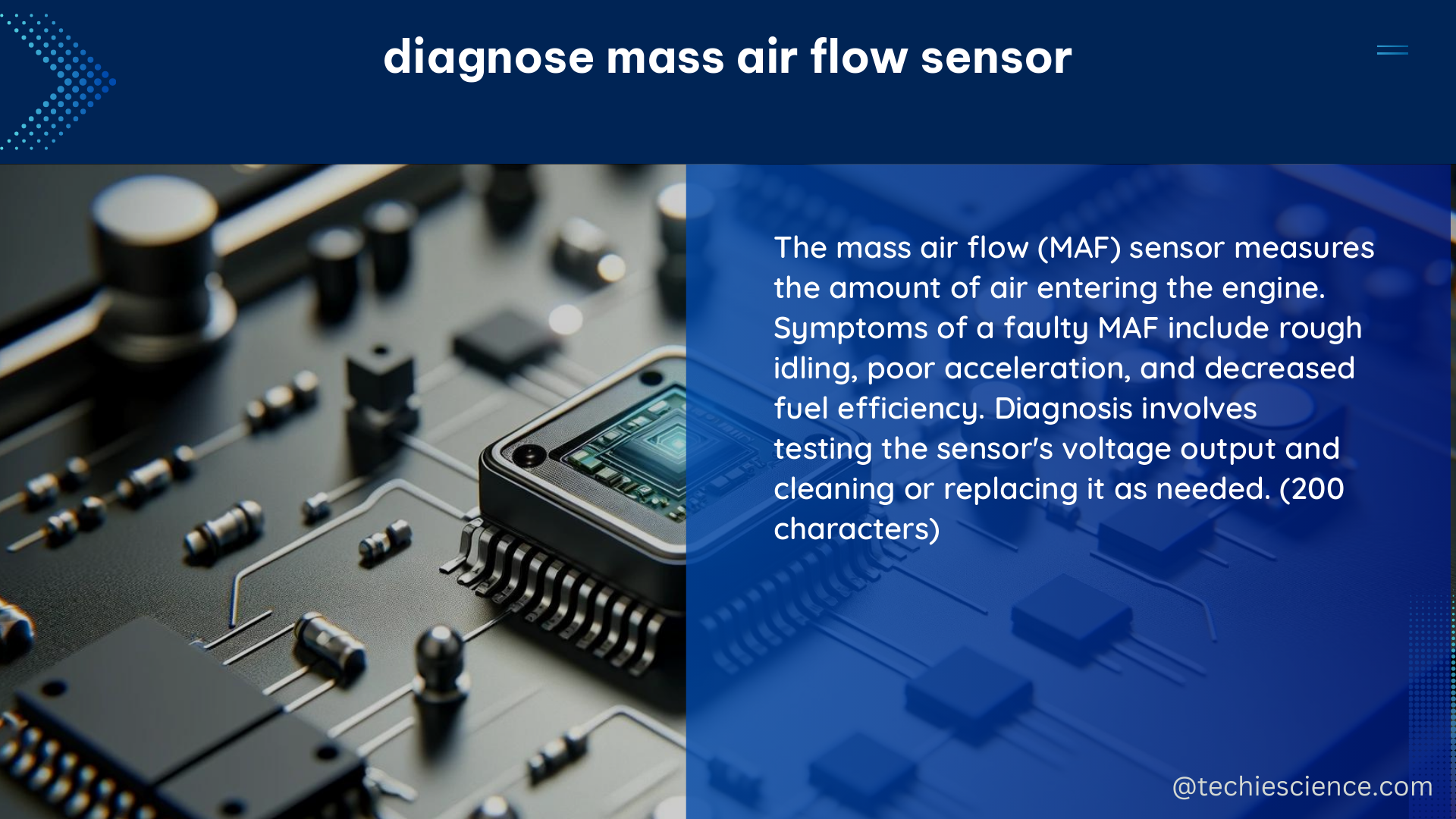The mass air flow (MAF) sensor is a critical component in the engine management system of modern vehicles. It measures the amount of air flowing into the engine, which is essential for the engine control unit (ECU) to determine the correct fuel injection and ignition timing. Diagnosing a MAF sensor is crucial to ensure optimal engine performance and fuel efficiency. In this comprehensive guide, we will explore the various techniques and data points to effectively diagnose a MAF sensor.
Grams per Second (g/s) Measurement
The primary metric for evaluating a MAF sensor’s performance is the grams per second (g/s) measurement. This value represents the amount of air flowing into the engine, and it should be closely monitored during the diagnostic process. With the engine off, the MAF sensor should not have a high g/s reading. When the engine is started and the RPM is doubled, the MAF sensor’s g/s reading should also double. This relationship between engine speed and airflow is a crucial indicator of the sensor’s functionality.
Forty Times Rule

The “forty times rule” is a widely accepted guideline for assessing the performance of a MAF sensor. During a wide-open throttle test drive, the peak MAF reading should exceed forty times the engine’s displacement. For example, on a 2.0-liter engine, the airflow measurement should exceed 80 g/s (2.0 x 40). This test helps to ensure that the MAF sensor is capable of accurately measuring the maximum airflow required by the engine.
Vehicle Speed Sensor (VSS) Integration
The vehicle speed sensor (VSS) can be used to cross-reference the data provided by the MAF sensor. If the VSS is reading a speed of 60 mph, but the MAF sensor is showing a low g/s reading, it could indicate a problem with the MAF sensor. This comparison helps to identify any discrepancies between the two sensors, which can aid in the diagnosis.
Engine Coolant Temperature (ECT) Correlation
The engine coolant temperature (ECT) sensor can also be used to diagnose MAF sensor issues. If the ECT is reading correctly but the MAF sensor is not, it could suggest a problem with the MAF sensor. This relationship between the ECT and MAF sensor readings can provide valuable insights into the overall engine management system’s performance.
Live Data and Data Stream Analysis
Using an OBD2 scan tool, you can access the live data or data stream to examine the MAF sensor’s g/s readings. This real-time data can help determine if the MAF sensor is functioning properly or if there are any fluctuations or inconsistencies in its performance.
MAF Sensor Types and Troubleshooting
There are several types of MAF sensors, each with its own unique characteristics and troubleshooting methods:
- Vane Sensor: Measures airflow by the movement of a vane or flap within the airflow.
- Vortex Sensor: Measures airflow by detecting the vortices created by the air passing through a restriction.
- Hot-Wire Sensor: Measures airflow by the cooling effect of the air on a heated wire.
Familiarizing yourself with the specific features and diagnostic procedures for each type of MAF sensor can greatly assist in the troubleshooting process.
Underlying Issues and Diagnostic Codes
It’s important to note that mass air flow sensor codes, such as P0171 (Fuel System Too Lean Bank 1) or P0174 (Fuel System Too Lean Bank 2), are often an indication of another underlying problem. MAF sensor issues can present themselves as drivability problems without any diagnostic trouble codes (DTCs) or malfunction indicator light (MIL) illumination. Therefore, it’s crucial to thoroughly investigate the entire engine management system to identify the root cause of the issue.
Technical Specifications
The technical specifications of a MAF sensor can vary depending on the make and model of the vehicle. However, some common specifications include:
| Specification | Example |
|---|---|
| Measurement Range | 0 to 200 g/s |
| Accuracy | ±2 g/s |
| Response Time | 10 milliseconds |
| Temperature Range | -40 to 150°C |
Understanding these technical details can help you better interpret the sensor’s performance and identify any potential issues.
DIY Diagnostic Procedure
To diagnose a MAF sensor yourself, follow these steps:
- Access the MAF Sensor: This may require removing the air filter housing or other components to gain access to the MAF sensor.
- Use an OBD2 Scan Tool: Connect the scan tool to the vehicle’s OBD2 port and access the live data or data stream to examine the MAF sensor’s g/s readings.
- Perform the Forty Times Rule Test: Take the vehicle on a wide-open throttle test drive and record the MAF sensor signal in g/s. The peak MAF reading should exceed forty times the engine’s displacement.
- Check for Other Underlying Problems: If the MAF sensor is functioning properly, there may be another underlying issue causing the drivability problem. Investigate the entire engine management system for any other potential issues.
By following these steps and utilizing the various data points and diagnostic techniques, you can effectively diagnose and troubleshoot a mass air flow sensor.
References:
- Mass Air Flow Sensor Diagnostics for Adaptive Fueling Control of Internal Combustion Engines
- How to Test a Mass Air Flow (MAF) Sensor
- Mass Air Flow (MAF) Sensor Diagnosis
- Mass Air Flow (MAF) Sensor Diagnosis and Replacement
- MAF Sensor Diagnosis

The lambdageeks.com Core SME Team is a group of experienced subject matter experts from diverse scientific and technical fields including Physics, Chemistry, Technology,Electronics & Electrical Engineering, Automotive, Mechanical Engineering. Our team collaborates to create high-quality, well-researched articles on a wide range of science and technology topics for the lambdageeks.com website.
All Our Senior SME are having more than 7 Years of experience in the respective fields . They are either Working Industry Professionals or assocaited With different Universities. Refer Our Authors Page to get to know About our Core SMEs.